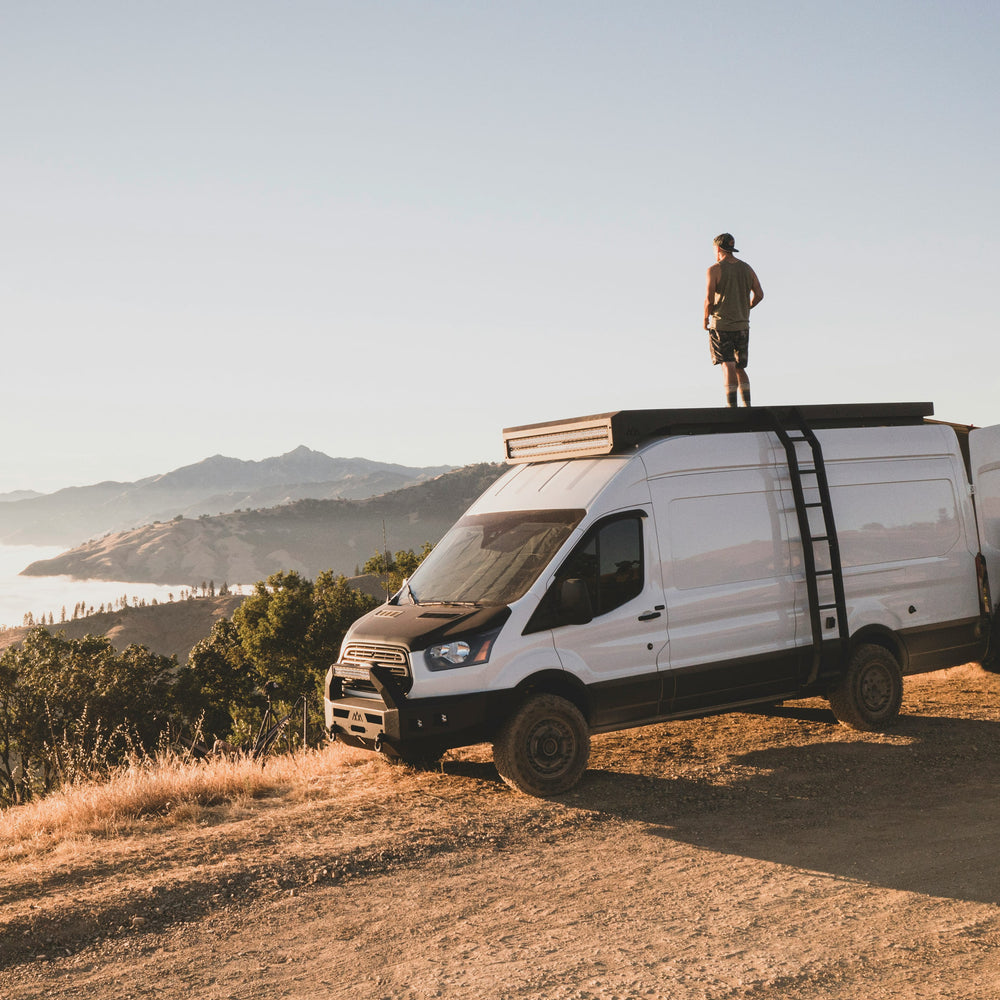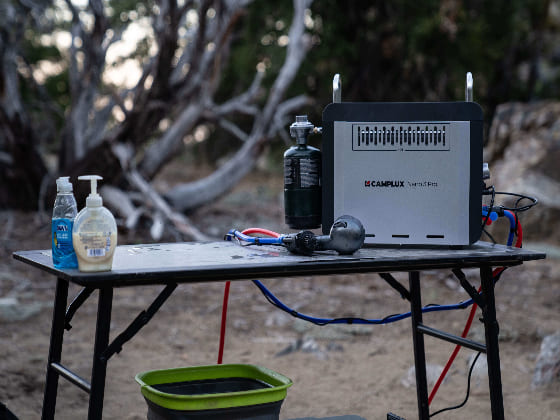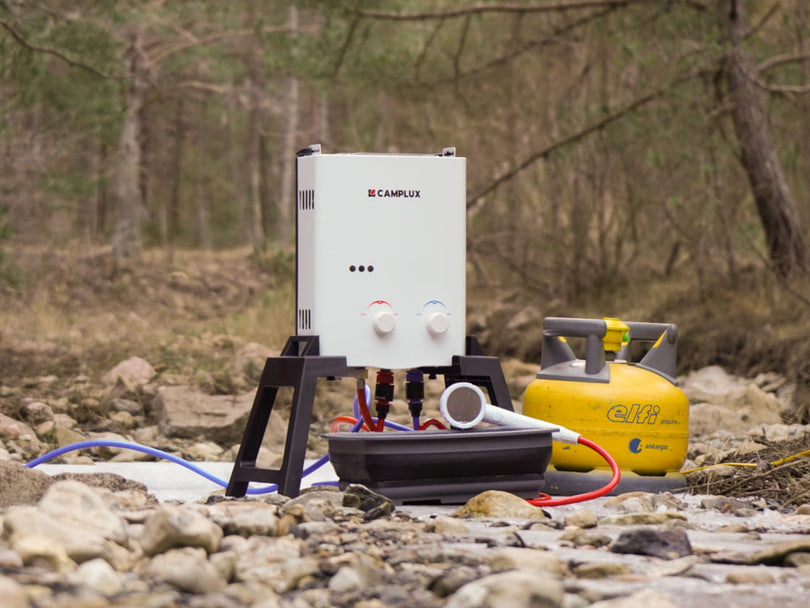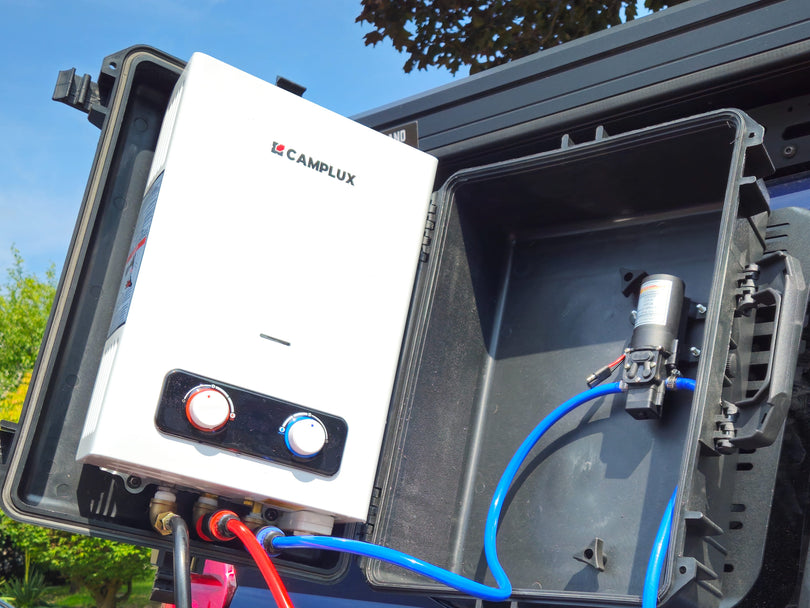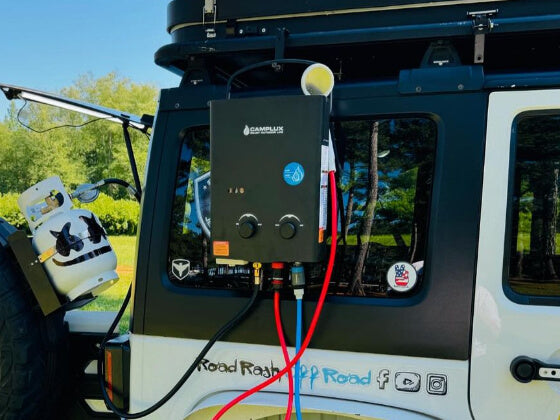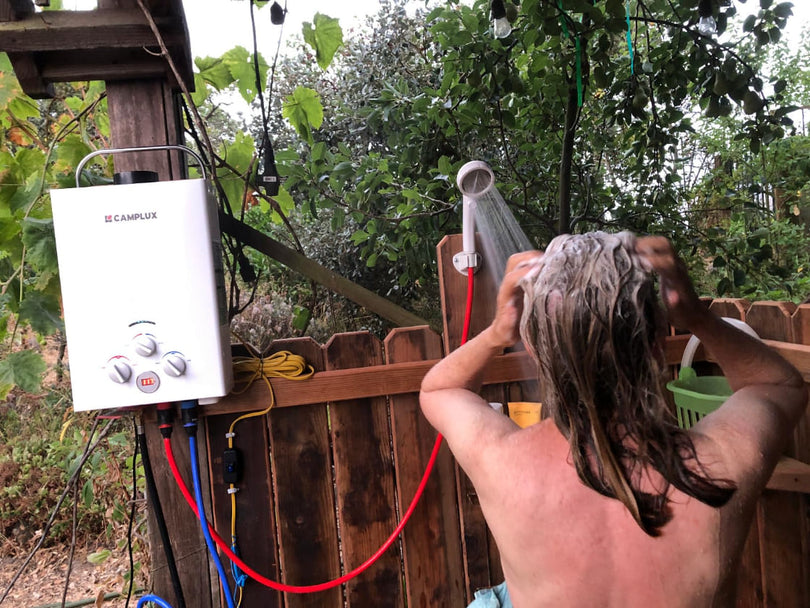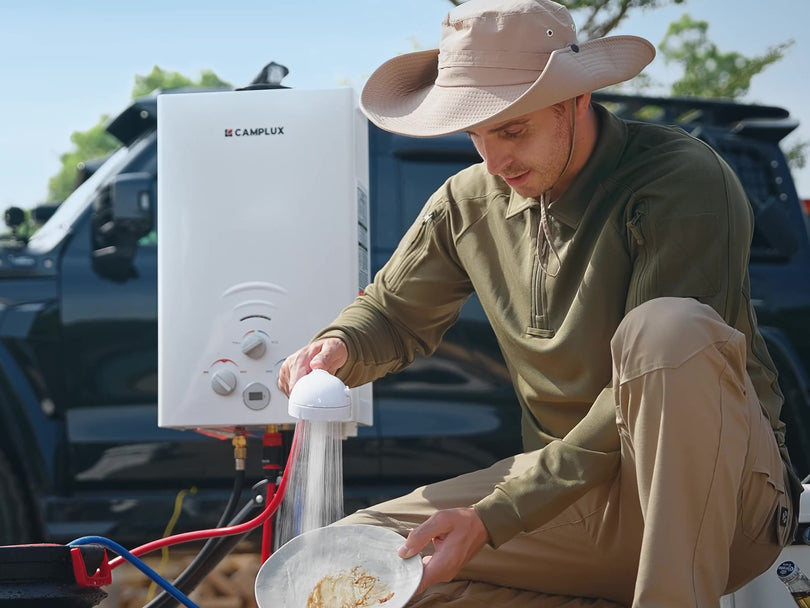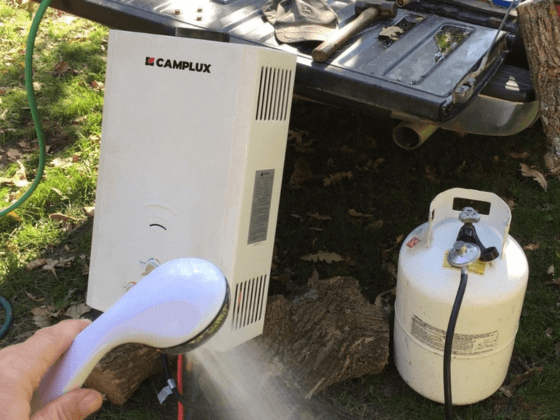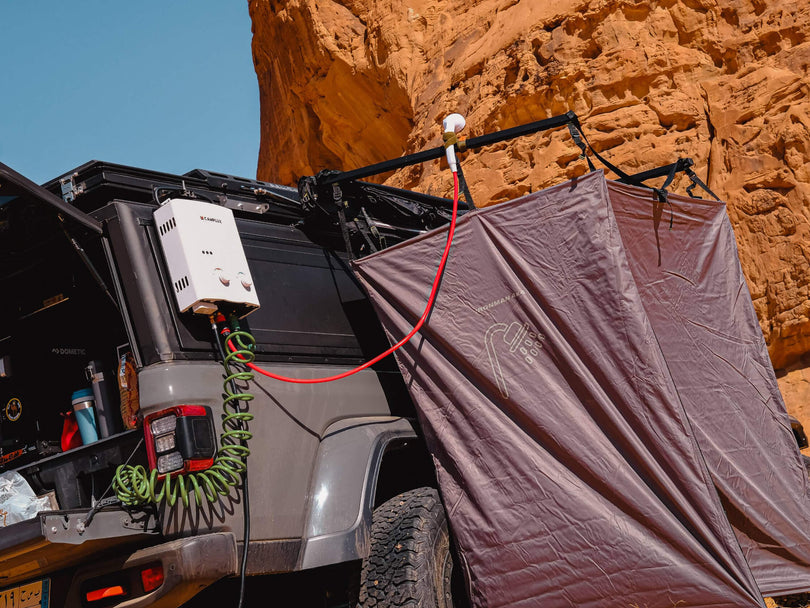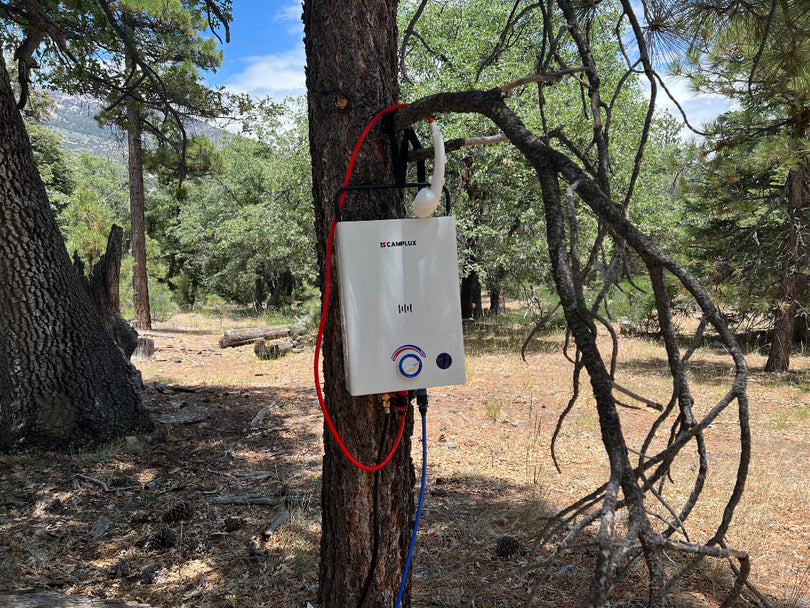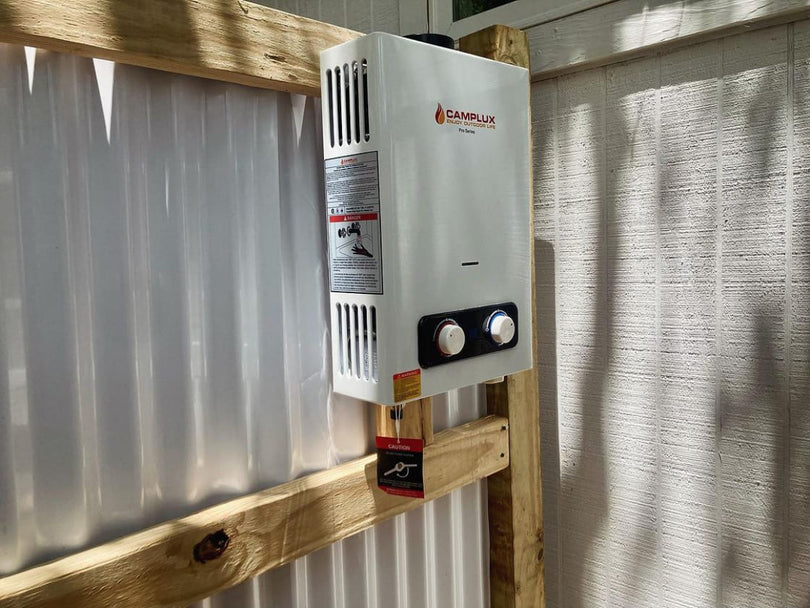Imagine arriving at a campsite in the Lake District or setting up your caravan by Cornwall's coast, knowing a steaming hot shower is ready whenever you are. Camplux's range of portable outdoor water heaters makes this possible – from washing off muddy boots to enjoying a warm outdoor shower under the stars. This post will show you how to keep your Camplux water heater (including the Camplux Nano 3Pro, AY132B, BD158, BW158C, BW264BC, and BW422) running reliably for years of camping and caravanning adventures. We'll cover practical UK-focused maintenance tips to extend the lifespan of your unit, so you can continue to enjoy hot water on-demand wherever your outdoor life takes you.
Meet the Camplux Outdoor Range for Camping Life
Camplux offers a variety of portable gas water heaters tailored to outdoor use. Whether you need a compact unit for weekend camping or a high-output water heater for a campervan or horse wash, there's a model for you: the ultra-portable Camplux Nano 3Pro is lightweight and runs on small propane canisters; the popular Camplux AY132B delivers 5L/min, perfect for outdoor showers and pet washing; step up to the 6L Camplux BD158 or Camplux BW158BC for more flow; or choose the 10L Camplux BW264BCor powerful 16L Camplux BW422 for larger caravanning setups and off-grid cabins. All these models are designed for the outdoors – they're ignited by batteries, have convenient handles or mounts, and many include a rain cap or other weather protection. Taking good care of them will ensure you continue to get instant hot water on every trip.
A Camplux portable water heater (Pro Series) with its shower hose and gas regulator – built for camping and outdoor showering.
Practical Maintenance Tips to Prolong Your Water Heater's Life
Your Camplux water heater is a rugged piece of kit, but a little routine maintenance goes a long way toward keeping it working like new. Here are some practical tips for care and maintenance in UK conditions:
-
Clean and Descale Regularly: Outdoor adventures can introduce dirt and hard water deposits into your water heater. Every few uses, flush clean water through the unit to clear out sediment. In hard-water areas (common in parts of the UK), consider descaling the water heater periodically to prevent limescale buildup on the heat exchanger. A quick rinse of the shower head and inlet filter (if your model has one) will also maintain good water flow.
-
Check Gas Connections and Batteries: Before each trip, inspect the propane hose and regulator for any cracks, kinks or leaks. Ensure all fittings are tight. A simple soapy water test on the connections (looking for bubbles) can confirm there are no gas leaks. Also, verify the condition of the batteries in your water heater's ignition – whether it's the built-in battery of the Nano 3Pro or the D-cell batteries in models like the AY132B and BW series. Fresh batteries ensure reliable ignition and proper control display (for models that have one).
-
Protect from the Elements: While Camplux outdoor water heaters are built for open-air use, our British weather can be harsh. Use the supplied rain cap (on models like the BW158BC, BW264BC and BW422) to keep rain, leaves and insects out of the top vent. If you expect heavy rain or wind when the unit is mounted outside, take it down and stow it or cover it when not in use. Never leave the water heater outside in freezing temperatures with water inside – that can crack the internal pipes. If camping in winter, always drain the unit after use (see tip 5). And when you pack up, store the water heater in a dry place. A weatherproof storage bag or a plastic tote box is great for transport and keeps the unit safe from knocks and moisture.
-
Monitor Water Pressure and Flow: Camplux water heaters have a minimum water pressure requirement to activate (usually very low, around 0.25–0.3 bar). Ensure your water source provides sufficient flow – if using a 12V pump from a barrel, make sure the pump delivers the needed pressure. On the other hand, don't subject the water heater to pressure beyond its rated max (around 8 bar for most models) – this isn't usually an issue with UK mains or pumps, but worth noting if you have a very high-pressure supply. Keeping the flow within proper limits prevents strain on the system. If you notice fluctuating temperatures, it could be due to inconsistent water flow or needing to adjust the gas/water mix knobs for a steadier output.
-
Drain and Dry After Use: One of the most important tips for longevity is to drain your water heater after each trip, especially before storing it in cold weather. Simply disconnect the water source, let the unit run a few seconds to empty, and then open the drain plug (usually at the bottom of the unit) to let any remaining water trickle out. This prevents internal freeze damage and corrosion from stagnant water. For extended off-season storage, refer to our detailed guide on How to Drain and Store Your Camplux Water Heater During Off-Season (a must-read as the UK winter approaches). Once drained, keep the unit's insides dry – you can even give it a few hours in a warm room or airing cupboard to ensure no moisture remains inside before storing.
-
Annual Check-Up: Just like a caravan service or boiler check, give your portable water heater a thorough once-over at least once a year. Inspect the burner area for dust or spiderwebs (a soft brush or compressed air can clean it). Look at the condition of hoses and washers. Ensure the ignition pins are clean and not corroded. This preventive check can catch any wear and tear early. If you're not confident in doing this, a qualified gas appliance technician can service portable propane appliances – though with basic care, most users can maintain their Camplux themselves. And remember, never attempt modifications – use genuine Camplux parts if something needs replacing (like a hose or shower head) to keep it safe and efficient.
By following these tips, you'll significantly extend the lifespan of your outdoor water heater. Not only will it last longer, but it will also perform more efficiently – giving you faster hot water with less gas. Importantly, regular maintenance ensures safety; for instance, checking for gas leaks and proper ventilation keeps your camping crew safe from mishaps. For more detailed troubleshooting guidance, have a look at our blog on Common Issues with Outdoor Water Heaters and How to Fix Them – it covers everything from igniter problems to fluctuating temperatures, so you know what to do if something isn't working right.
Enjoy Years of Hot Showers on Your Adventures
A reliable supply of hot water can turn a good camping trip into a great one. With simple care, your Camplux water heater will be a trusty companion on countless hikes, beach trips, festivals, and caravan holidays across the UK. Picture yourself rinsing off under a warm shower after surfing in Cornwall or providing hot water for washing up during a chilly Highlands camp – those little comforts are possible thanks to a well-maintained water heater. Keep up with these maintenance practices and you'll continue to enjoy instant hot water wherever you roam. And don't forget to explore our other Camplux blog posts for more tips on getting the most out of your gear – whether it's a guide to Winterising Your Camplux Water Heater: A UK Guide for those frosty camping nights, or a look at essential accessories to pair with your portable water heater. With the right care and know-how, your outdoor water heater will serve you faithfully for many adventures to come. Happy camping, and enjoy the hot showers! 🚿🔥
Extending the lifespan of your outdoor water heater is easier than you think – keep it clean, dry, and protected, and you'll enjoy warm outdoor showers on every UK camping trip for years to come.
